 The “Oberländer” Bread is a bread with tradition and stormy history: In 1829 the city council of cologne fixed the price for bread. The Bakers did not agree and so the bakers strike started. To get bread for the city, the council ordered bread in the region upriver, the so called “Oberland”. As this region has poor soil, the bread is baked with lots of rye there. This yields a bread with long shelf life and so it could be easily transported down the rhine to cologne. The cologne inhabitants liked the bread very much and even after the strike was ended they insisted on getting their beloved “Oberländer”. And so this bread is baked in cologne until today.
The “Oberländer” Bread is a bread with tradition and stormy history: In 1829 the city council of cologne fixed the price for bread. The Bakers did not agree and so the bakers strike started. To get bread for the city, the council ordered bread in the region upriver, the so called “Oberland”. As this region has poor soil, the bread is baked with lots of rye there. This yields a bread with long shelf life and so it could be easily transported down the rhine to cologne. The cologne inhabitants liked the bread very much and even after the strike was ended they insisted on getting their beloved “Oberländer”. And so this bread is baked in cologne until today.
The characteristic shine of the crust is due to a glaze made of starch and water. Another characteristic trait of this bread are the tree slashes across the loaf. It is a mild rye bread with a fine crumb and a long shelf life. It pairs well with both hearty and sweet. And so it is both a beautiful bread for the regionalen Bread series and a good gift for someone who just moved to cologne.

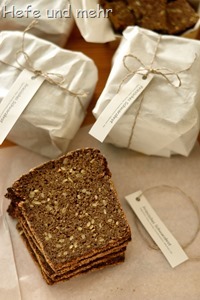 The very first suggestion I got for the post series “regional bread” was East Frisian Black Bread. As I already wrote a recipe for the magazine “
The very first suggestion I got for the post series “regional bread” was East Frisian Black Bread. As I already wrote a recipe for the magazine “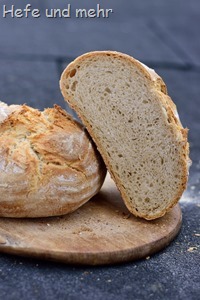 The second bread for my regional bread collection is one I know well: a crusty bread from the rhineland, called “Rheinisches Krustenbrot”.
The second bread for my regional bread collection is one I know well: a crusty bread from the rhineland, called “Rheinisches Krustenbrot”.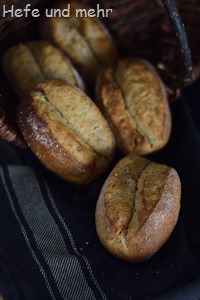 Finally I can post the first recipe in the upcoming post series of “regional breads” and can tell you how I came to this idea.
Finally I can post the first recipe in the upcoming post series of “regional breads” and can tell you how I came to this idea.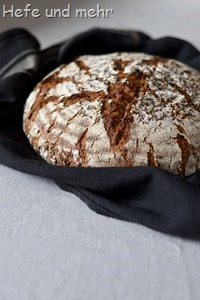 I was asked more than once to publish a sourdough rye bread recipe for the “Bread baking for Beginners” post series. I hesitated as a rye bread is not so easy to handle as a wheat one and to know when a pure sourdough loaf is ready to bake needs some experience. But with the
I was asked more than once to publish a sourdough rye bread recipe for the “Bread baking for Beginners” post series. I hesitated as a rye bread is not so easy to handle as a wheat one and to know when a pure sourdough loaf is ready to bake needs some experience. But with the 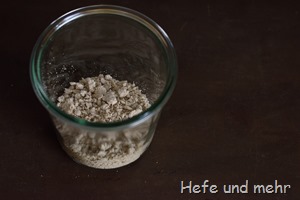 Some days ago I had to sent some sourdough per mail. That is easy when the sourdough is mixed with a lot of flour to form dry crumbs – the German name for this is “Krümmelsauer” while it is called “Gerstl” in Austria. The crumbs should be as dry and fine as possible. This reduce the amount of water and put the microorganisms to hibernation. In this state there is nearly no fermentation going on.
Some days ago I had to sent some sourdough per mail. That is easy when the sourdough is mixed with a lot of flour to form dry crumbs – the German name for this is “Krümmelsauer” while it is called “Gerstl” in Austria. The crumbs should be as dry and fine as possible. This reduce the amount of water and put the microorganisms to hibernation. In this state there is nearly no fermentation going on.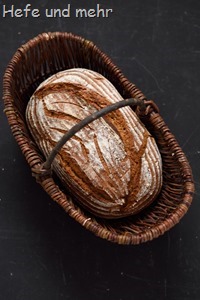 I like recipe tweaking – especially when this happens so spontaneously like
I like recipe tweaking – especially when this happens so spontaneously like 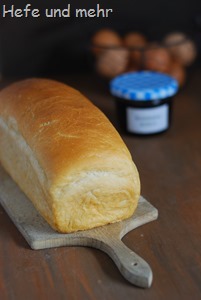
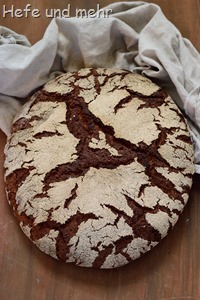 I like to bake “by order” as I can then bake bread I bake rather seldom. Pure Rye bread, for example, as I have a rather sensitive stomach who do not like the higher acidity of rye bread. And while I do not eat rye bread I still like to bake it. Its different consistency makes it a bit challenging and is a nice change in my wheat- and spelt-dough routine.
I like to bake “by order” as I can then bake bread I bake rather seldom. Pure Rye bread, for example, as I have a rather sensitive stomach who do not like the higher acidity of rye bread. And while I do not eat rye bread I still like to bake it. Its different consistency makes it a bit challenging and is a nice change in my wheat- and spelt-dough routine.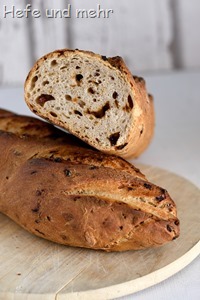 Reader’s wishes are a good thing. They often give me new impulses or remind me of – sometime to obvious – breads. And when Julia wrote that a recipe for onion bread would be a fine idea, I was thinking: of course! And for the past long, sunny weekend I started to create a recipe.
Reader’s wishes are a good thing. They often give me new impulses or remind me of – sometime to obvious – breads. And when Julia wrote that a recipe for onion bread would be a fine idea, I was thinking: of course! And for the past long, sunny weekend I started to create a recipe.